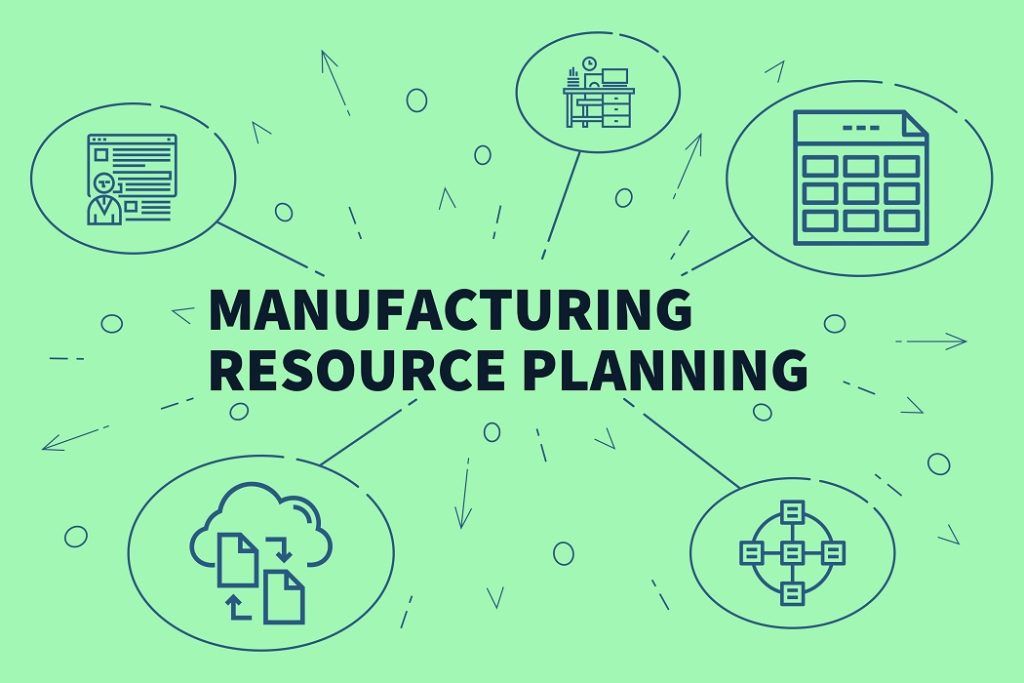Manufacturing Resource Planning
A system that is used to effectively plan the use of a manufacturer’s resources
What is Manufacturing Resource Planning?
Manufacturing resource planning is a system that is used to effectively plan the use of a manufacturer’s resources. It enables manufacturers to develop a precise production schedule for the future that minimizes costs and maximizes the use of the resources available at their disposal.

Sales forecasting helps a manufacturer estimate the expected demand for a product so that they can source the proper amount of raw materials and schedule deliveries and quantities on time. It also provides a target production level to determine the number of machine units and labor required during a given production cycle.
Manufacturing resource planning arrives at the optimal order quantity and frequency for raw materials by adding the average use for a planned replenishment lead time with the safety stock that is required to protect against stock-outs.
Thus, “When to Order” = Average Use Time + Safety Stock
Summary
- Manufacturing Resource Planning is a system that is used to effectively plan the use of a manufacturer’s resources.
- The integrated information system facilitates the decision-making process for management by centralizing, integrating, and processing information related to the manufacturing process.
- Together, MRP I and MRP II gave rise to the Enterprise Resource Planning (ERP) system.
What is MRP II?
The term manufacturing resource planning refers to an information system that is used by businesses involved in manufacturing goods. The integrated information system facilitates the decision-making process for management by centralizing, integrating, and processing information related to the manufacturing process.
It enables management to make an accurate visualization of the scheduling and inventory process and design engineering and to effectively employ cost-control measures.
The MRP II was developed in 1980 after a need for a software that integrates accounting systems while making forecasts about inventory requirements. The earlier version, MRP I, was developed in 1964, and the first company to use it was Black and Decker.
What is Enterprise Resource Planning (ERP)?
The MRP II was built upon earlier materials requirement planning systems. It is slightly more advanced, because, unlike MRP I, it includes additional data about the needs of employees and other financial needs of the business. Together, MRP I and MRP II gave rise to the Enterprise Resource Planning (ERP) system.
ERP enables a manufacturer to integrate data related to all important parts of its business processes. The ERP system may include areas like planning, raw material purchases, inventory management, sales, finance, marketing, human resources, etc.
ERP systems are often complimented with many other large applications that work in tandem with the ERP software to enable the company to actually implement it.
Although MRP II systems are still widely used, ERP software is considered to be more evolved. It is because ERP enables the operators to include data that is beyond the scope of manufacturing processes. The system may include asset management and consumer relationship management, which are extremely important for service-based companies.
Real-World Examples of MRP II Software
Some popular software providers for MRP information systems are as follows:
- IQMS
- Oracle Netsuite Manufacturing Edition
- Fishbowl
- FactoryEdge
- Abas
- Prodsmart
- Epicor
MRP I vs. MRP II
- MRP II software is considered a functional replacement of MRP I. It is because the MRP II information system includes all the functionality of its predecessor; it offers inventory tracking, bill of materials (BOM), and master production scheduling. In addition to such characteristics, it also enables the involvement of logistics, marketing, and finance.
- MRP II is also able to account for the human resources of an organization, thus providing a holistic view of the real operating capacity of a company, unlike MRP I. It includes machine capacity and personnel capacity.
- MRP II also enables effective demand forecasting. It also allows its operators to enter data into the system and see what variables will produce a downstream effect. The MRP II system enables them to arrive at the optimal level of sales. Moreover, it can also provide feedback based on the variables entered for a given operation, which is why it is also known as a closed-loop system.
More Resources
CFI offers the Financial Modeling & Valuation Analyst (FMVA®) certification program for those looking to take their careers to the next level. To keep learning and advancing your career, the following resources will be helpful: